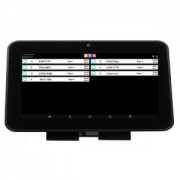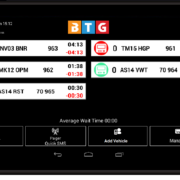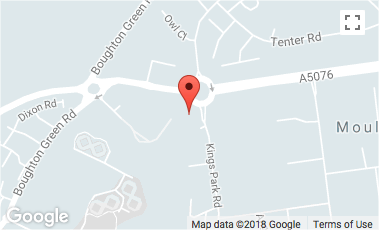Waiter Paging, Simple but Effective
Introduction:
One of the most popular products utilised by restaurant operators in the UK are waiter pagers, here is an overview of why.
In the dynamic and fast-paced environment of restaurants, efficiency is a key factor that contributes to customer satisfaction and operational success. One simple innovative tool that has significantly improved staff efficiency in the restaurant industry is the waiter pager system. Waiter pagers are wireless communication devices that enable seamless communication between the kitchen and serving staff, enhancing coordination and overall restaurant performance.
1. Streamlining Communication:
Waiter pagers serve as an effective means of streamlining communication between the kitchen and waitstaff. Traditionally, restaurant staff relied on verbal communication, bells, or even shouting to relay information from the kitchen area to the front of house. This manual process often led to misunderstandings, delays, and errors. Waiter pagers eliminate these challenges by providing a direct and instantaneous communication channel, ensuring that orders are promptly served and wait staff can remain front of house attending to customer orders.
2. Faster Turnaround Time:
One of the primary advantages of using waiter pagers is the significant reduction in turnaround time for customer orders. Chefs can call wait staff to the kitchen the moment a customers order is ready eliminating the need for wait staff to be waiting in the kitchen for orders to be completed. This results in quicker service, which is crucial in a competitive industry where customers increasingly value both speed and quality.
3. Increased Table Turnover:
Improved communication and faster service facilitated by waiter pagers contribute to increased table turnover. As tables are cleared and prepared for the next set of diners more efficiently, restaurants can accommodate more guests throughout busy peak times. This not only enhances revenue but also creates a positive impression of the restaurant as a place that values customers’ time.
4. Enhanced Customer Experience:
Efficient service made possible by waiter pagers directly contributes to an enhanced customer experience. When diners receive their orders promptly and accurately, they are more likely to have a positive perception of the restaurant. Waiter pagers also enable staff to provide better customer service by addressing special requests or dietary restrictions without delay, leading to increased customer satisfaction and loyalty.
5. Improved Staff Productivity:
With waiter pagers handling the communication between the front and back of the house, restaurant staff can focus more on customer interactions and other essential tasks. This leads to improved staff productivity, as waiters can spend more time attending to customer needs, upselling, and ensuring a positive dining experience. The reduction in manual communication also minimises the risk of errors, allowing staff to perform their duties with greater confidence.
6. Cost-Efficiency:
Implementing waiter pager systems can be a cost-effective solution for restaurants in the long run. The initial investment in a waiter paging system is often outweighed by the increased efficiency and productivity they bring to the establishment. The positive impact on customer satisfaction and revenue will more than be cover the initial costs of implementing such systems.
Conclusion:
Waiter pagers have emerged as a game-changer in the restaurant industry, providing a reliable and efficient solution to communication challenges between the front and back of the house. By streamlining communication, reducing turnaround time, and enhancing overall staff productivity, waiter pagers contribute significantly to improved restaurant efficiency. As the industry continues to evolve & embrace more technological solutions waiter pagers will likely continue to be an essential solution for establishments seeking to provide exceptional service and stay competitive in a demanding market.
Find out more Waiter Paging System









